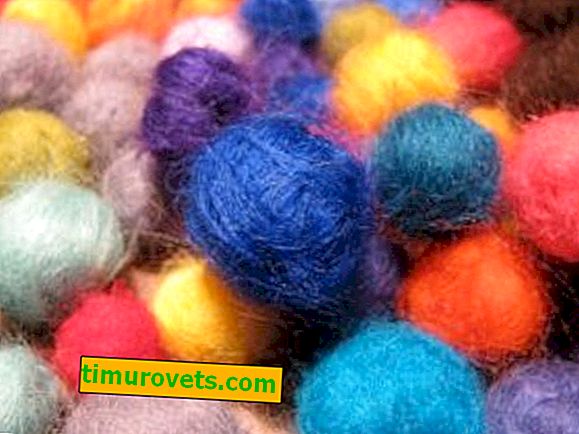One of the popular fabrics used in the manufacture of warm clothes are fleece and wool. Read on about the main features of these materials, about how they are similar, how they differ and what is still warmer.
What is fleece?

The main parameter of a fleece is its specific gravity . It can vary from 100 to 600 g / m2. Lightweight shirts and pullovers are sewn from canvases with low density. More dense fabrics are used as pads and insulation.
Important! One of the significant drawbacks of the fleece is its large electrification.
Wool characteristics
Wool is one of the oldest types of raw materials for the manufacture of fabrics and knitwear. It is obtained by weaving animal fibers. The following features of wool are distinguished:

- dirt resistance. This is a natural property of natural wool;
- low thermal conductivity, due to which maximum thermal protection is carried out;
- passes air and absorbs body vapors;
- low turnover.
Attention! The main source of raw materials for industrial use are sheep, camels and goats. The softest products are obtained from a fleece of sheep of merino breeds and goat fluff.
How are they similar, how do they differ?
These materials are very similar to each other. This is due to the similarity of their structure. Some differences were revealed:

- Wool, unlike fleece, has antibacterial properties. By its nature, it has a negative charge and repels bacteria.
- The coat may irritate the skin, as it is more abrasive. Fleece items are often bought by children: they are hypoallergenic, soft and pleasant to the body.
- Fleece products are very easy to care for. They are not whimsical to care for and are not affected by moths. For wool use only gentle washing and gentle drying. Woolen products like moths and other insects.
What is still warmer - wool or fleece?

For a better warming effect, you must first wear thermal underwear made of merino wool, and upstairs clothes made of fleece. The decision on the choice of a particular material is most often applied taking into account the specific characteristics of the human body - its microflora, age, immunity and various reactions of the body .
Reference! Fleece is recommended to be used as a second layer of clothing that retains heat.
Both of the materials considered have special properties and advantages. Everyone can choose products based on their own needs and wishes. We hope that this article will be interesting and will help you navigate the right choice of material.










